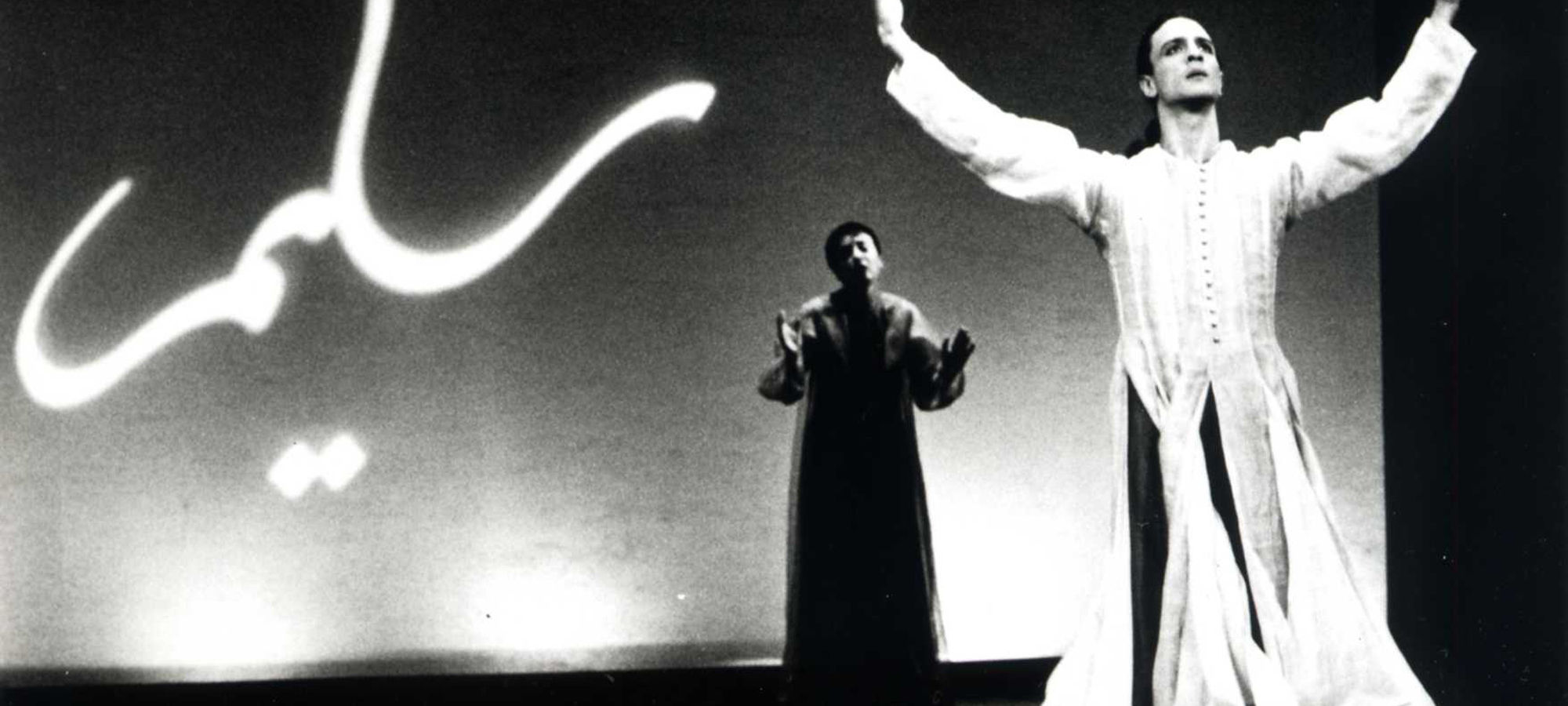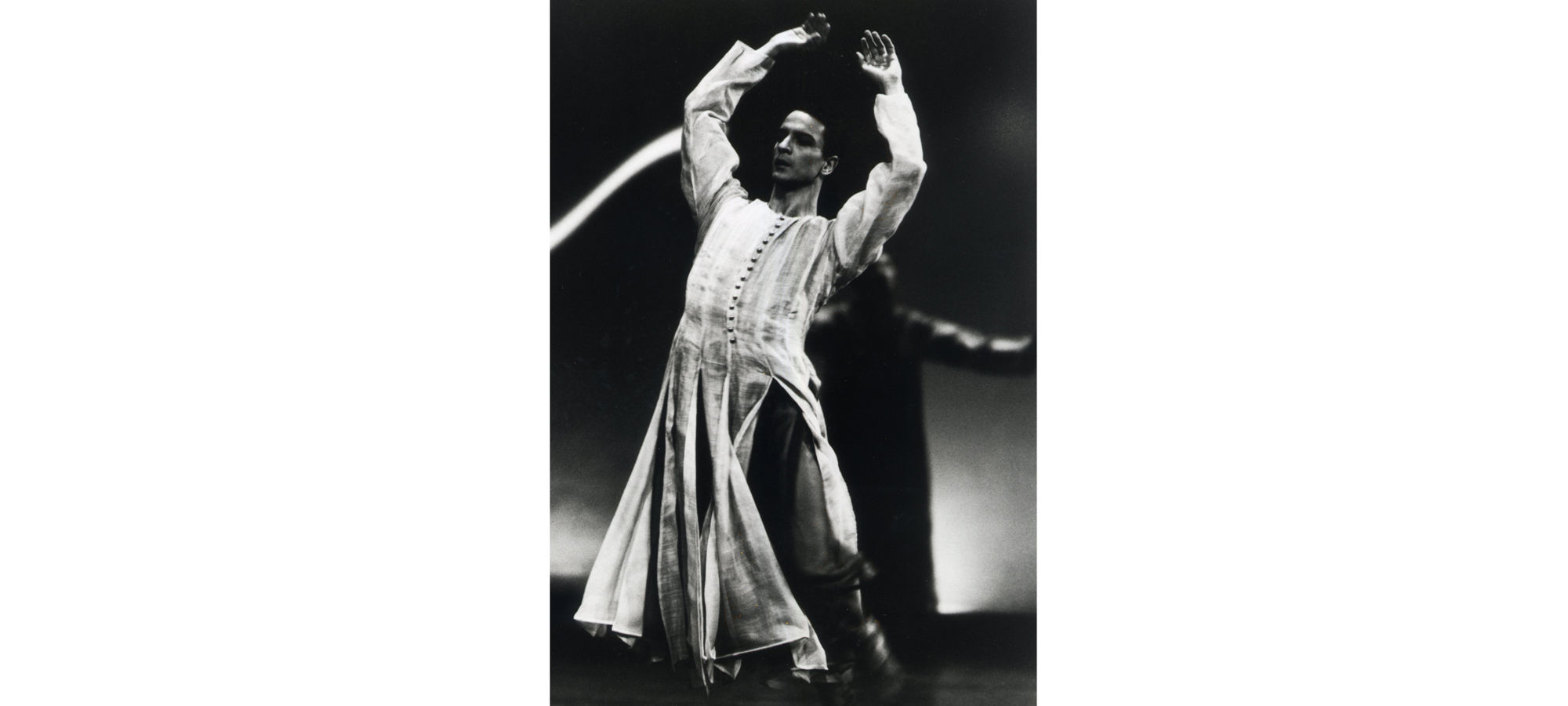
Selim
The poetic evocation of the Kabyle roots of the principal dancer, Kader Belarbi, transfigured into a noble knight.
World premiere on January 5, 1995 in Cerritos, CA (United States). French premiere on May 10, 1995 at the Opéra Comique, Paris.
Kader Belarbi and Michel Kelemenis know each other as craftsmen of the same trade. Both are French coming from waves of migration, and when the principal dancer of the Paris Opera suggested that the choreographer create something for him, they quickly agreed to poetically scrutinize the question of origin. A beacon of prestigious collaborations point to the exceptional performer: Sélim is dressed by the illustrious fashion designer Kenzo, embraced by the luminous calligraphy of Hassan Massoudy and carried by the eternal voice of Houria Aichi. The noble knight and thoroughbred Belarbi, exploring the arid expanses of an imaginary desert, feels the shadows cast by his beloved left behind at the camp.
“Sélim is the name that my father wanted to give me and that I gave to my son. I have only fragments of this paternal origin. My father, confides Kader Belarbi, told me about Algeria as if recounting fairy tales even though he was tormented about it for long time. I only had the smells, the scent of Muslim lands, nothing more. Dancing Sélim to the voice of Houria Aïchi awakened in me a bond that I could only describe as maternal.”
Kader Belarbi
Echos
Libération Marie-Christine Vernay
May 1995
Lulled by the swirling Arab music that escapes from Marseille where he was born and now works, Michel Kelemenis wrote a score where a child catches up with the horseman. The curves contrast with the horse’s bucking, the fleeing rider’s flight evoked in song. We recognize the choreographer’s style, and above all, we can sense how Kelemenis listened to the dancer’s wishes : Kader took possession of Sélim. He embodies the choreography as if it were written only for him. He becomes one with the voice and is troubled. It’s this trouble that is the most surprising, especially since the choreography circulates it throughout his body, weakening it intensely. In a certain way, Sélim talks about the dancer’s sense of pride, whether he continues his journey interpreting Swan Lake or Kelemenis.



